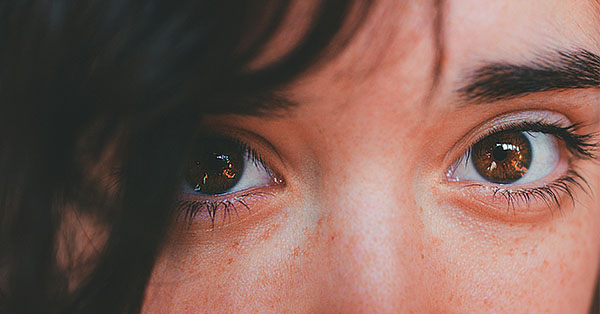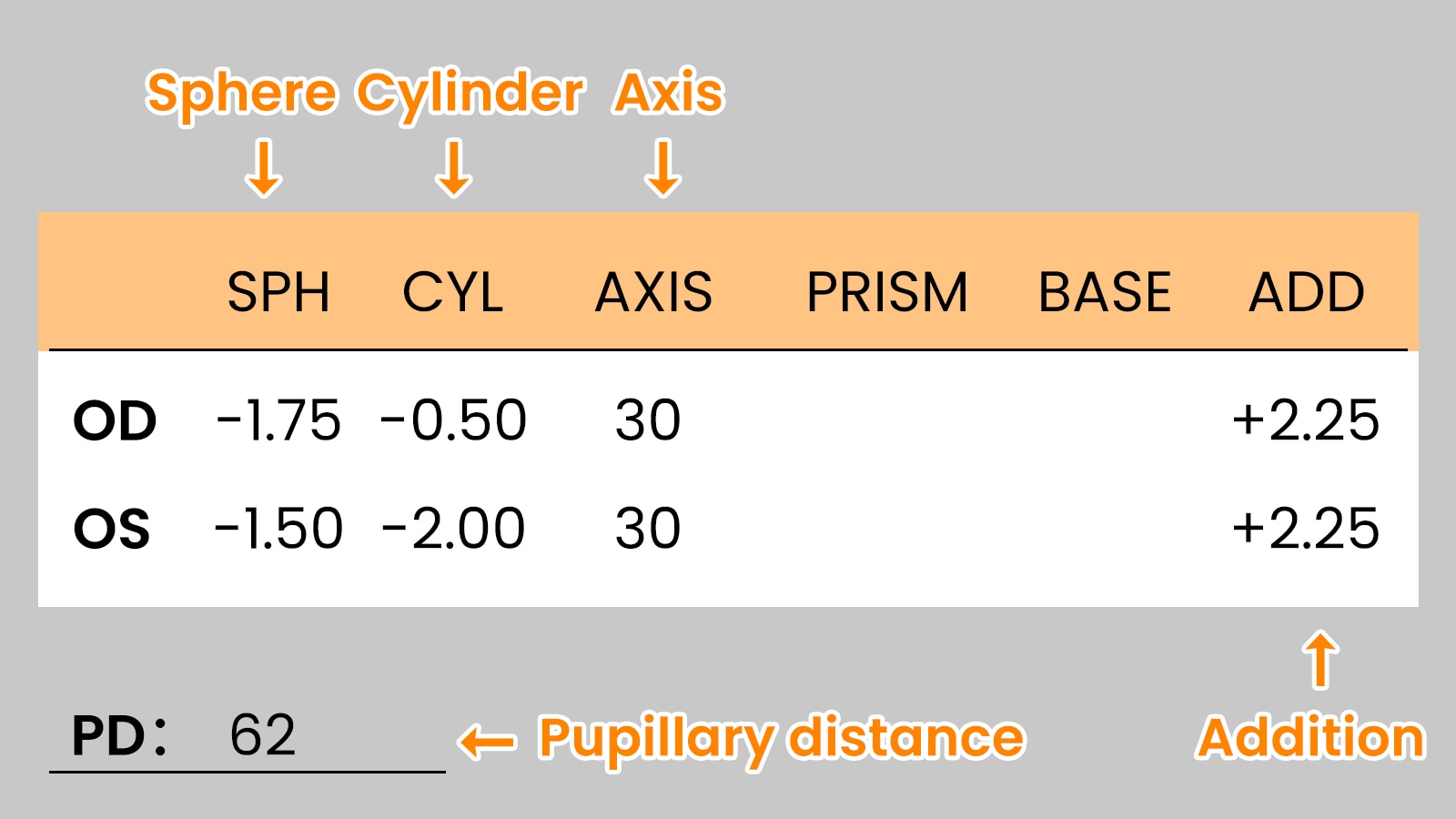
Guide to Picking Glasses That Suit Your Face Shape Perfectly
February 27,2023

What is Boho Style? A Comprehensive Guide to Boho-Chic Fashion
February 13,2025

Virtual Glasses Try On - Find Your Perfect Pair Online
April 02,2024

UV Protection Glasses VS. Blue Light Glasses - Vooglam
July 20,2023

Newest Style Modern Trendy Mens Glasses | Vooglam
March 01,2024

Stylish Reading Glasses: Blending Fashion with Functionality
February 16,2023

What are photochromic lenses & glasses?
September 22,2023

Brown Eyes: The Beauty of the Most Common Hue
September 01,2024

The chubby face glasses for round face female
August 02,2023

What are prisms in eyeglasses?
March 20,2023

What are Bifocal Lenses? - Vooglam
April 14,2023

How to Read Your Eyeglass Prescription?
March 11,2023
Complete Guide to Single Vision vs. Progressive Lenses
Think about this. You’re at your kid’s soccer game. They’re about to score a goal. Your phone buzzes. It’s a message from a friend. You look down, but the screen looks blurry. You move the phone closer, then farther away. You still can’t read it. That’s frustrating.
Maybe you’re at a café. You open the menu, but the words look blurry. You lift your glasses. Still hard to read.
That’s when many people ask: Should I get single-vision glasses or progressive lenses?
This guide will help you understand both in a simple and easy way. We’ll also talk about something most people forget: how your frames can totally affect how your lenses work.

What Are Single Vision Lenses?
Single vision lenses are the most common type. Single vision glasses fix one kind of eyesight problem at a time. They help you see far, see up close, or see something in the middle, like a computer.
It’s like using a screwdriver. It does one job, and it does it really well.
Who Uses Them? They’re great for people with:
Nearsightedness (myopia) – when faraway things look blurry
Farsightedness (hyperopia) – when close-up things are hard to see
Astigmatism – when vision is blurry due to an irregular eye shape
Lots of younger people wear single-vision glasses. But older folks can use them, too. They’re great for reading, driving, or working on a computer — whatever your eyes need help with.
Can You Wear Single Vision Glasses All the Time?
Yes, you can wear them all the time if they’re set up for your main vision needs.
Let’s say you wear them for distance. Great! They’ll help you see road signs and movie screens clearly. But when you try to read a book or check your phone? Things may get blurry.
Here’s the thing. As we get older, our eyes just don’t switch focus as easily as they used to. This is something called presbyopia, and it usually starts around age 40.
And no, waiting to get reading glasses or multifocal lenses won’t stop it. That’s what the experts say, including the American Academy of Ophthalmology. Hence, you need progressive lenses.
What Are Progressive Lenses?
Progressive lenses are like a multi-tool for your eyes. They correct near, middle, and far vision all in one lens. And the best part? There are no lines — unlike old-school bifocals.
They have a smooth transition of power, so you can shift focus just by moving your eyes slightly:
Top of the lens: for distance (driving, watching TV)
Middle: for intermediate (laptop screens, your car dashboard)
Bottom: for near vision (reading, texting)
It’s all built in — no switching glasses. No visible lines. Just a clean, stylish look that works with your lifestyle.

Who Needs Progressives? If you’re over 40 and find yourself struggling to read or focus on close things, you’re likely experiencing presbyopia. Progressive lenses are designed just for that.
Is Single Vision Better Than a Multifocal Prescription?
Let’s be real; neither one is better across the board. It depends on you. Here’s a side-by-side breakdown of single vision vs progressive:
| Feature | Single Vision Lenses | Progressive Lenses |
| Visual Field | Wide and clear, with little to no distortion | Central areas are sharp, but sides may have slight "swim" blur |
| Adaptation Time | Easy — most people adjust instantly | Takes time — a few hours to a couple of weeks. |
| Convenience | May need different pairs for different tasks | One pair does it all |
| Aesthetics | No lines | No lines + a youthful, modern look |
| Frame Fit | Works with most frames | Needs tall, steady frames |
| Cost (2025) | Around $50–$300 | Starts at $200, can go up to $800+ |
User Experience: Pros, Cons, and Common Hurdles
Single Vision Pros & Cons
Pros: Super clear vision for your main task; Affordable; Easy to adjust to
Cons: It is not ideal if you need to switch between distances often. You might need to carry around multiple pairs.
Is It Hard to Get Used to Progressive Lenses?
Here’s the truth: Progressives are amazing once you get used to them. But that first week? It can be tricky.
You might notice:
A strange "swim effect" at the edges
A narrow zone for mid-distance tasks (like using a computer)
Some eye strain if your frames aren’t aligned just right
But don't panic — this is normal. In fact, studies show that people who stick with them for a week or two report high satisfaction. It just takes a little patience and a good optician.
Why Your Frame Choice Matters
This part is super important — and often ignored. Your lenses only work right if the optical center lines up perfectly with your pupils. Imagine looking through the center of a camera lens. Perfect focus. But if you tilt the camera? Everything’s off. Same with glasses.
For Single Vision
You’ve got freedom here. Most frame styles will work. Just make sure they stay in place and don’t slip down your nose.
For Progressives: The 3 Golden Rules
1. Vertical Height: The frame has to be tall enough to fit all three vision zones — distance, intermediate, and near.
2. Stability: If your frames slide or tilt, you'll end up looking through the wrong part of the lens. That causes blur and discomfort.
3. Position of Wear (POW): This includes two things:
Pantoscopic Tilt – That slight angle toward your cheeks
Frame Wrap – The curve of the frame around your face
If these are off, even fancy digital lenses won’t feel right. That’s why custom fitting matters.
Do I Need Progressive Lenses or Single Vision?
Here’s your quick cheat sheet:
Choose Single Vision if
You only need help with one type of vision (distance or near)
You’re on a budget
You don’t mind having different glasses for different tasks.
You want a wide, clear field of view with no distortion.
Choose Progressives if
You’re over 40 and notice that reading is harder.
You want the convenience of one pair for everything.
You care about style and want no visible lines.
You’re ready to adapt and invest in a high-quality option.

Vooglam Blog
Vooglam blog shares professional knowledge about eyeglass frames, lenses, etc., and provides help when purchasing and using eyewear products. At the same time, Vooglam focuses on fashion glasses to interpret the trend of glasses for you.

What Are Rave Glasses? (And Can You Get Them with a Prescription?)
Planning your EDM festival or rave outfit is all about creative self-expression. You’ve got the fit, the shoes, and the accessories. But for prescription wearers, the excitement often hits a wall at o
November 16,2025
Why You Need Polarized Sunglasses Built for Winter
You wouldn't wear flip-flops in a snowstorm. So why are you wearing beach sunglasses?Winter glare is different. It's harsher, more dangerous, and your summer shades weren't designed to handle it.Here'
November 11,2025
How Long Is a Glasses Prescription Good For? (And Why They Expire)
It’s a familiar frustration: you’re ready to buy a new pair of stylish glasses, you find the perfect frames online, but when you go to check out, you see it. An expiration date on your eyeglass prescr
November 09,2025
Why Is My Eyesight Getting Worse? A Clear Guide to Causes and Next Steps
It can feel a bit worrying when you realize your eyesight is not as clear as it once was. You may be holding your phone a little farther away, or squinting to read signboards that used to look fine. A
November 03,2025

































